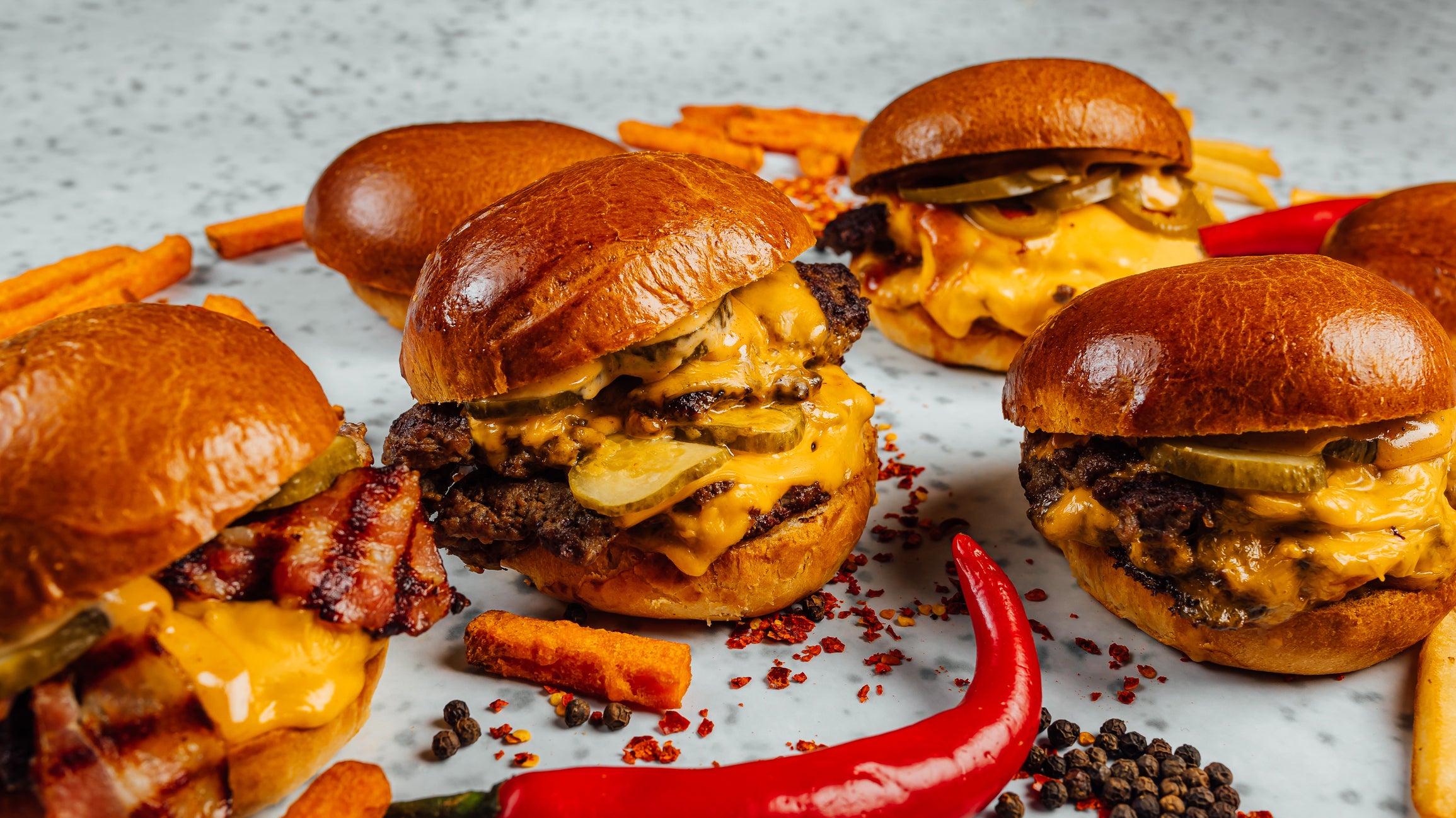
Your support helps us to tell the story
My recent work focusing on Latino voters in Arizona has shown me how crucial independent journalism is in giving voice to underrepresented communities.
Your support is what allows us to tell these stories, bringing attention to the issues that are often overlooked. Without your contributions, these voices might not be heard.
Every dollar you give helps us continue to shine a light on these critical issues in the run up to the election and beyond

Eric Garcia
Washington Bureau Chief
If you’ve walked through Soho at lunchtime recently, you’ve probably had to swerve queues snaking around the block. Perhaps it’s tickets for a hot new West End show? A secret Oasis gig in a dive bar? No – these people are lining up for smash burgers. Those crispy-edged marvels of culinary compression that have taken the UK’s burger scene hostage.
Everyone, from Instagram influencers to local butchers, won’t stop banging on about their charred, caramelised beef discs like they’ve reinvented the wheel. But what exactly is it about smashing a ball of meat into oblivion that has the British public collectively losing its mind?
Before we dive into the psychology of patty pounding, allow me to explain what a smash burger actually is. The clue is in the name. You take a ball of beef, press it flat onto a scorching griddle until it’s about half an inch thick and let the heat work its magic. That magic is called the Maillard reaction, after French chemist Louis Camille Maillard, who in 1912 discovered the effect of amino acids and reducing sugars combining. It’s become chef-speak for that crunchy, golden and ridiculously addictive crust.

For burger aficionados thinking “this is hardly new”, you’d be right. MEATliquour, a pioneer in the British burger scene, has been smashing patties since 2011. But they actually date back much further: to America, during the great depression. Smash burgers weren’t just a clever cooking technique; they were born out of necessity. In the 1920s and 1930s, when, much like now, wallets were thin and times were tough, restaurants needed a way to turn cheap cuts of beef into something people actually wanted to eat. The solution? Smash the patty onto a hot griddle to cook it quickly and develop a caramelised crust that made it taste far more indulgent than it really was. It was an economic hack that turned necessity into indulgence.
This technique spread across American diners, particularly in places like Oklahoma, where the infamous “onion burger” was born – stretching beef even further by smashing onions into the patty. By the 1950s, the smash burger had become a fixture in American fast food culture, though it was later overshadowed by the rise of thicker, juicier patties from chains like McDonald’s and Burger King. For decades, the smash burger lingered as a regional favourite, quietly biding its time until the fast-casual revolution of the early 2000s. As modern food culture embraced simplicity and quality, the smash burger re-emerged with a focus on flavour and craftsmanship, rebranded for a new generation.
So why are we suddenly talking about it now? The answer partly lies, as it often does these days, with social media. Smash burgers, with their crispy edges and molten cheese, are made for TikTok. Their visual appeal has propelled them to viral status. But unlike past food trends that sacrifice taste for looks (ahem, rainbow bagels), smash burgers offer both. They look good and taste even better, tapping into this larger trend where dining is as much about the experience as the food. People don’t just want a meal; they want a moment – something they can share, photograph and talk about. And when food trends catch fire online, restaurants notice.
London’s Supernova has been leading the charge, drawing hordes of hungry fans eager to try its take on the smash burger. In fact, the UK capital is becoming somewhat of a hub of flat-patty places with new operators like Supra Burger and SMSH BN popping up everywhere. Even international heavyweights are jumping into the fray. Cult brands like Copenhagen’s Gasoline Grill and New York’s 7th Street Burger have hosted sold-out pop-ups over the summer, while Fat Phill’s, originally from Amsterdam, is planning a nationwide expansion. And Brits can’t get enough.

The simplicity of smash burgers – brittle crust, juicy middle, soft bun, and maybe some melted cheese and a squirt of homemade sauce – has struck a chord with today’s consumers, particularly in the UK. After years of towering, over-engineered burgers stacked with everything from mac and cheese to pulled pork, people’s mouths seem to be watering for something simpler, more refined and less of a challenge to eat. The smash burger strips away the excess, focusing purely on the essentials. It’s all about the beef and the bun, with just enough extras to let the meat shine.
Today, smash burgers are perfectly in tune with the zeitgeist. Consumers want indulgence, but they want it quick and made from ingredients they can trust. Fast-casual dining bridges that gap, offering the convenience of fast food with a touch of sophistication. The smash burger is made for this world, and for restaurateurs, it’s the holy grail: lower costs, higher efficiency and a guaranteed hit with the Instagram crowd. A crucial advantage in today’s tough economic climate. As inflation bites and household budgets shrink, the availability of a meal for £12 to £15 is more attractive than ever.
But it’s not just about affordability. The UK has been embracing American-style fast food for years with a distinctly British sense of refinement. From gourmet burger chains like Byron and Honest Burgers to today’s minimalist offerings, British consumers have grown accustomed to fast food that’s been elevated into something classier. We’ve taken the American diner aesthetic and given it an upgrade, with meticulously sourced ingredients and a sprinkling of restraint. The smash burger fits seamlessly into this cultural narrative. It’s casual but classy, indulgent but not over-the-top, and deeply nostalgic without being stuck in the past.
Simplicity doesn’t mean a lack of quality, though. The best smash burgers are made with the finest beef, often sourced from local butchers who take pride in their craft. Slap & Pickle, for instance, sources its beef from Swaledale, a butcher known for supplying some of the UK’s top chefs. Temper Burger butches its meat in-house from a single Yorkshire farm. For these operators, the fat-to-lean ratio (ideally 30:70) is critical for ensuring that the patty stays juicy without becoming greasy. This attention to detail, even in something as seemingly straightforward as a burger, shows just how far food appreciation has come.
Ultimately, smash burgers might not be just another passing fad – they’re a reflection of the times. In an era defined by economic uncertainty and rising costs, people are seeking out comfort, quality and simplicity. Smash burgers offer all of that in spades. But they’re also a sign of a cultural shift towards more mindful, ingredient-led dining, where quality is prized over excess, and less really is more. Smash burgers are a reminder that sometimes, the simplest things are the most satisfying.







